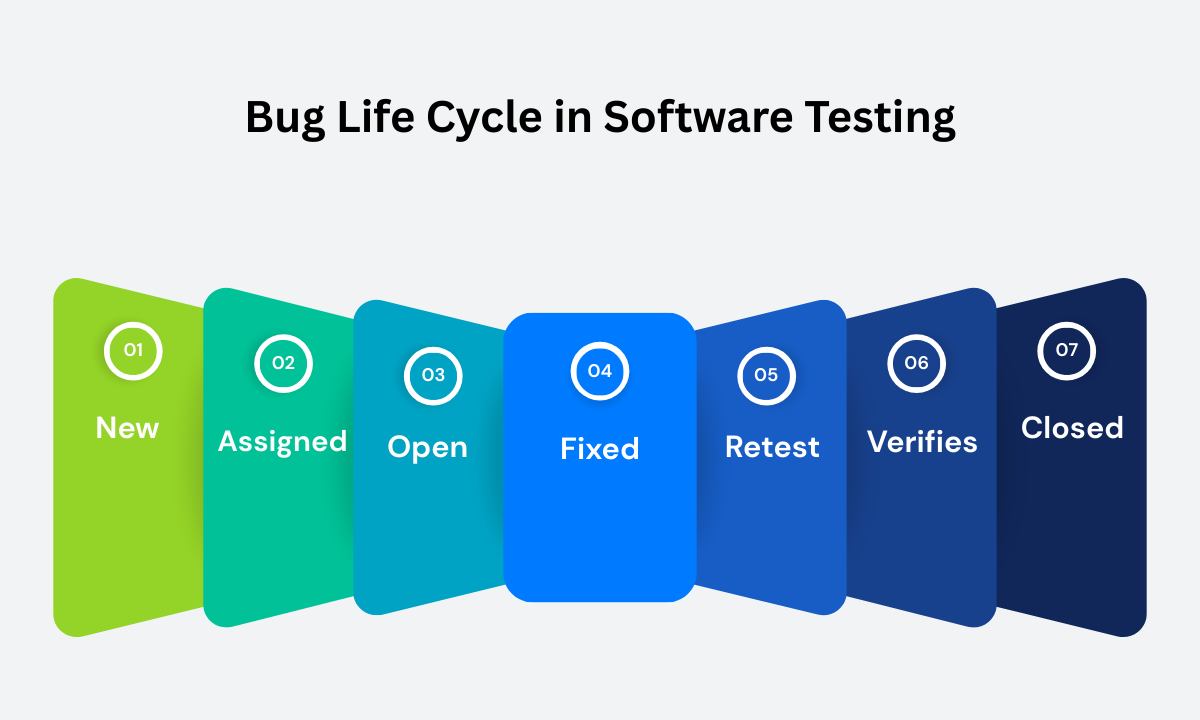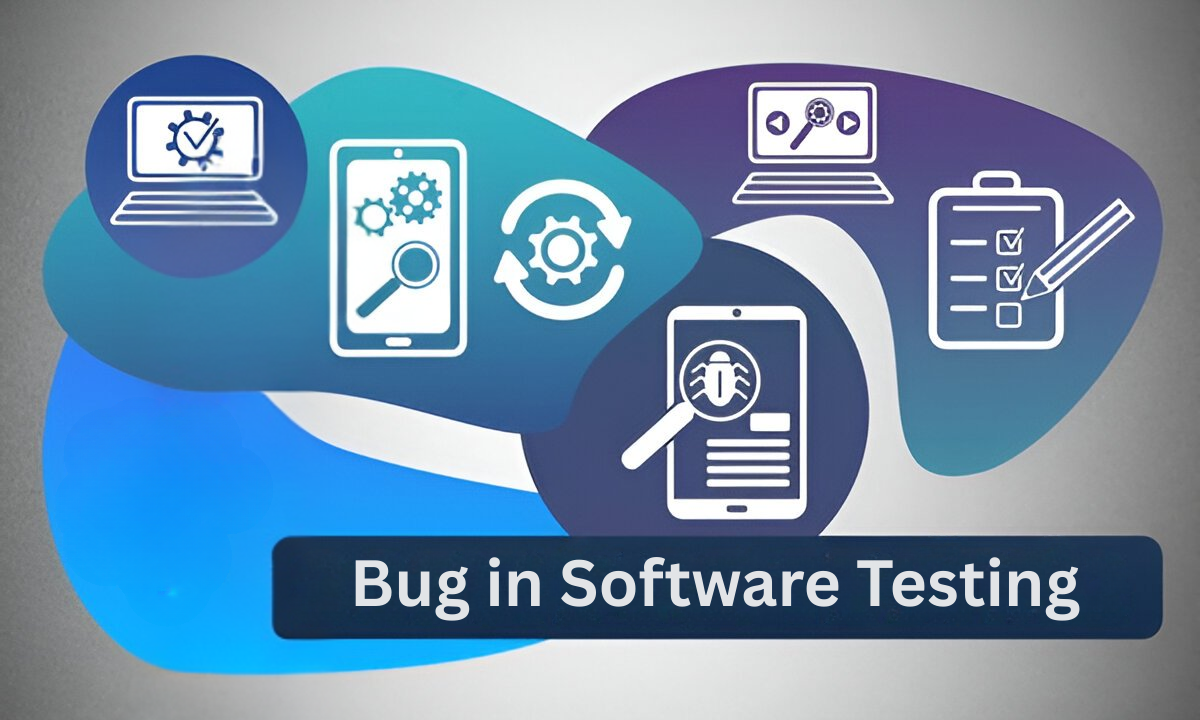Table of contents:
|
1. Key Takeaways |
|
2. What is a Bug in Software Testing |
|
3. Types of Bugs in Software Testing |
|
4. Bug Life Cycle in Software Testing |
|
5. Bug Reporting in Software Testing |
|
6. Bug Tracking Tools in Software Testing |
|
7. Why a Software Testing Course in Bangalore Helps |
|
8. Final Thoughts |
|
9. Frequently Asked Questions (FAQs) |
When we talk about ensuring software quality, bug in software testing are unavoidable. Whether you are beginning a software testing course in Bangalore or working in a test team, understanding what a bug is, how it’s found, managed, and finally fixed can make all the difference. Let’s explore the full picture of bugs, their life cycle, types, how to report them properly, tools you can use, and why training matters so much.
Key Takeaways
-
Definition: What is a bug in software testing vs a defect
-
Major types of bugs include functional, performance, and usability issues.
-
How the bug life cycle in software testing progresses—stages from detection to closure.
-
Best practices for bug reporting in software testing.
-
Leading bug tracking tools in software testing.
What is a Bug in Software Testing
A bug in software testing (also referred to as a defect, fault, or error) is any flaw in the software that causes unexpected or incorrect behaviour when compared to the specified requirements. It could be a crash, wrong output, UI misalignment, performance lag, or a feature not working at all.
Fixing Bugs matters because they:
-
Degrade user experience.
-
Increase costs if found late.
-
Affect reliability and brand reputation.
Types of Bugs in Software Testing
There are several types of bugs in software testing, each highlighting different aspects of how software can fail.
The most common are functional bugs, which occur when a feature doesn’t behave as intended. For example, if a “Submit” button doesn’t store data correctly, that’s a functional bug.
Then we have performance bugs, where the software might technically work but fails under load, such as a website slowing down when too many users log in.
Usability bugs are equally important. These are issues that make the product difficult or frustrating to use, like poor navigation or unclear labels.
Another critical category is security bugs, which leave applications vulnerable to attacks or unauthorized access. Think of flaws that allow data leaks, weak password encryption, or unsafe input handling.
There are also compatibility bugs, which appear when software doesn’t work properly across different browsers, operating systems, or devices. For instance, a web app may render perfectly on Chrome but break on Safari.
Finally, we often encounter logic bugs, caused by errors in business rules. A common example is an e-commerce site applying discounts incorrectly.
By identifying and categorizing these different bug types, testers can prioritize fixes more effectively based on severity and business impact.
Bug Life Cycle in Software Testing

The bug life cycle in software testing refers to the journey of a defect from detection to resolution. Standard stages include:
1. New — Tester identifies and logs the bug.
2. Assigned — Bug is reviewed and assigned to a developer.
3. Open — Developer investigates and starts working on it.
4. Fixed — Code changes are made to resolve the bug.
5. Retest — Tester checks if the fix works.
6. Verified — Tester confirms that the issue is resolved.
7. Closed — Final confirmation and closure of the bug.
There may also be states like Rejected, Duplicate, or Deferred, depending on the project workflow.
Bug Reporting in Software Testing
Effective bug reporting in software testing is crucial for timely resolution. A good bug report should clearly state the issue, environment, steps to reproduce, and expected vs actual results.
Key components of a strong bug report:
-
Concise summary or title.
-
Unique bug ID.
-
Details about the environment (OS, browser, version).
-
Exact steps to reproduce.
-
Screenshots, logs, or video evidence.
-
Severity and priority level.
Poorly written bug reports waste time, while detailed reports speed up fixes.
Bug Tracking Tools in Software Testing
To streamline bug management, testers use bug tracking tools in software testing. Popular choices include:
-
Jira — Industry leader, supports custom workflows and dashboards.
-
Bugzilla — Reliable, open-source option.
-
MantisBT — Simple, lightweight tool for smaller teams.
-
Redmine — Combines bug tracking with project management.
-
Zoho Bug Tracker — Cloud-based, with automation and reporting features.
These tools help log issues, assign tasks, track progress, and generate reports that improve team productivity.
Why a Software Testing Course in Bangalore Helps
A software testing course in Bangalore equips learners with practical knowledge of bug detection, bug life cycles, and reporting using real tools like Jira and Bugzilla. With Bangalore being a global IT hub, such training offers both industry exposure and job opportunities.
Final Thoughts
A bug in software testing isn’t just a glitch—it’s part of a structured process that ensures software quality. By learning what a bug is in software testing, understanding the types of bugs in software testing, mastering the bug life cycle in software testing, writing detailed bug reports in software testing, and using effective bug tracking tools in software testing, you’ll be well on your way to a career in QA. Pair that with a strong software testing course in Bangalore, at Apponix, and you will be equipped to handle challenges in any testing environment.
Frequently Asked Questions (FAQs)
Q1: What’s the difference between a defect and a bug in software testing?
They’re often used interchangeably, but “bug” is more informal, while “defect” refers to documented deviations from requirements.
Q2: Which type of bug is most common in real projects?
Functional bugs are the most common, followed by usability and compatibility issues.
Q3: Can a bug reappear after being closed?
Yes, this is known as a “reopened” bug and occurs when the fix doesn’t completely resolve the issue.
Q4: Do bug tracking tools integrate with development tools?
Yes, tools like Jira integrate with CI/CD pipelines, version control, and agile boards.
Extremely important—practical exposure helps you master reporting formats, workflows, and industry tools quickly.





